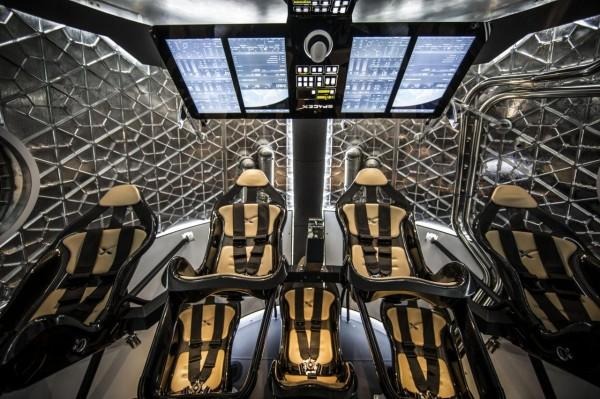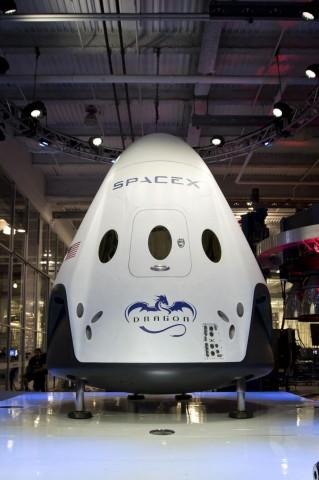SpaceX Dragon V2 designed for humans and reusabiility
With the first Dragon spacecraft hanging above the audience's heads, the illustrious Elon Musk unveiled the Dragon version 2. This latest spaceship from his SpaceX company was designed with two goals in mind: carrying humans and landing on solid ground, all in one piece.
SpaceX made history with the Dragon version 1, which not only docked with the International Space Station, though not entirely without human intervention, but also managed to return home intact, though with conventional landing mechanisms, procedures, and locations. It was designed by a company that, Musk admits, didn't know much about designing spaceships back then. Now they know better, and it will show in the Dragon V2.
The Dragon V2 is designed to have humans on board, unlike the first dragon that only carried cargo. It can fit up to 7 astronauts and sports touchscreen control panels that would probably make sci-fi fans squirm with excitement. Of course, it still has manual, physical controls for the more critical emergency functions. The spaceship is still meant to dock with the ISS, though this time it is claimed to be able to do all on its own.

But getting to space is just half the story. In terms of technological advancements, it is the landing where the Dragon V2 probably improved the most. The Dragon V2 is meant to land on the ground, not on water. The new Super Draco engines will be the heroes of this mission, providing enough thrust to carry both the ship and its human cargo safely to the ground. There are still parachutes for backup, just in case. But each of the engines also come in pairs so that should one half fail, the other will kick in. The result is a landing that is said to be as accurate as that of a helicopter. It is also noteworthy that the engines are the product of 3D printing technology and not the usual manufacturing process.

This landing business isn't just for show, however. The ultimate goal is to have an spacecraft that can come back home in near perfect condition and simply be refueled for its next flight. A reusable spacecraft, so to speak. As long as spaceships are destroyed or discarded every time they land, space travel will never become common place.
Musk asked the audience to imagine if airplanes behaved the same, which is, admittedly an incomprehensible proposition. In order for space flight and travel to truly take off, pun unintended, we need to have spacecraft that can safely land on ground and be reused over and over again. As Musk would put it, this is how a spaceship in the 21st century should land, and hopefully, that is indeed how the Dragon V2 will perform. That is, when and if it manages to win a contract with NASA for trips to the ISS again.
